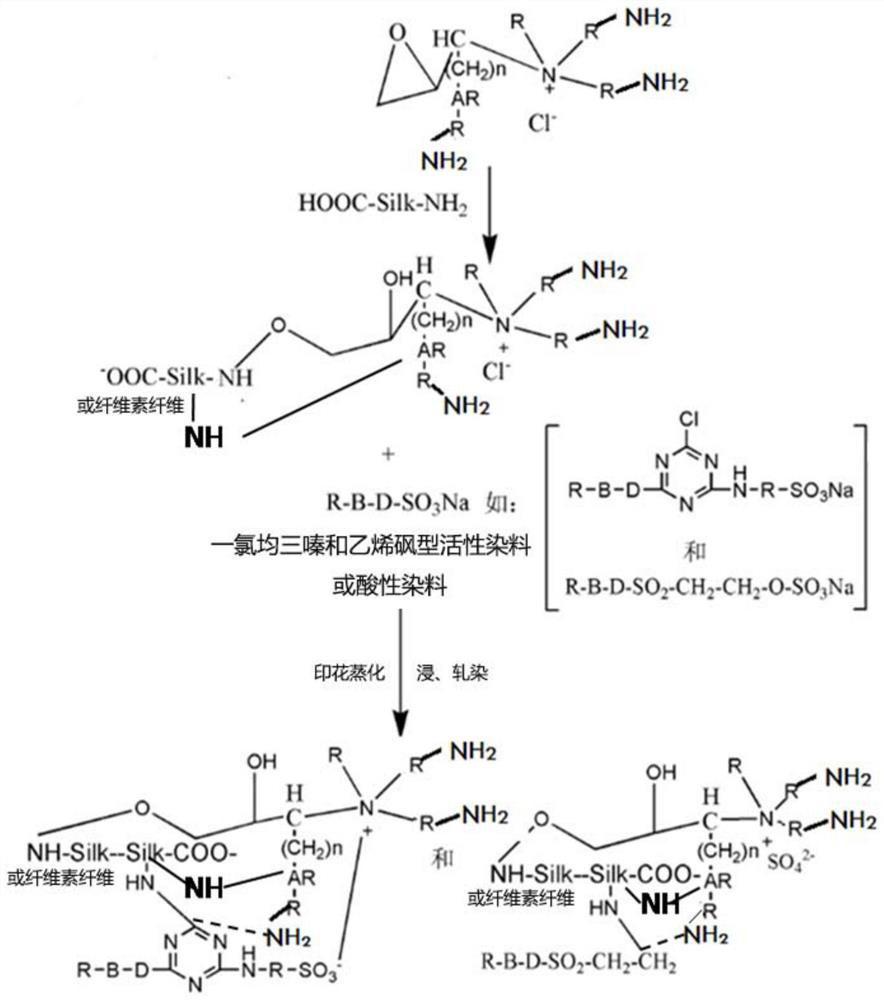Salt-free alkali-free washing-free dyeing method for all-cotton and regenerated cellulose fabric
A regenerated cellulose, salt-free and alkali-free technology, which is applied in dyeing, fabric surface trimming, textile material treatment, etc., can solve the problems that are not conducive to resource regeneration and environmental protection, high water, electricity, steam energy consumption, and long dyeing process time , to achieve the effect of meeting the needs of sustainable development of green environmental protection, saving dyes, saving salt and alkali and washing-free process
- Summary
- Abstract
- Description
- Claims
- Application Information
AI Technical Summary
Problems solved by technology
Method used
Image
Examples
Embodiment Construction
[0017] The following will clearly and completely describe the technical solutions in the embodiments of the present invention with reference to the accompanying drawings in the embodiments of the present invention. Obviously, the described embodiments are only some of the embodiments of the present invention, not all of them. Based on the embodiments of the present invention, all other embodiments obtained by persons of ordinary skill in the art without making creative efforts belong to the protection scope of the present invention.
[0018] see figure 1 , the present invention provides a technical solution: a salt-free and alkali-free washing-free dyeing method for cotton and regenerated cellulose fabrics, comprising the following steps:
[0019] S1-1: Prefabricated padding: Place the semi-finished fabric on the padding equipment, soak the fabric with multi-channel guide rollers to fix the color, enhance the efficiency and wash-free amine, and then pass it through the double-...
PUM
 Login to View More
Login to View More Abstract
Description
Claims
Application Information
 Login to View More
Login to View More - R&D
- Intellectual Property
- Life Sciences
- Materials
- Tech Scout
- Unparalleled Data Quality
- Higher Quality Content
- 60% Fewer Hallucinations
Browse by: Latest US Patents, China's latest patents, Technical Efficacy Thesaurus, Application Domain, Technology Topic, Popular Technical Reports.
© 2025 PatSnap. All rights reserved.Legal|Privacy policy|Modern Slavery Act Transparency Statement|Sitemap|About US| Contact US: help@patsnap.com

